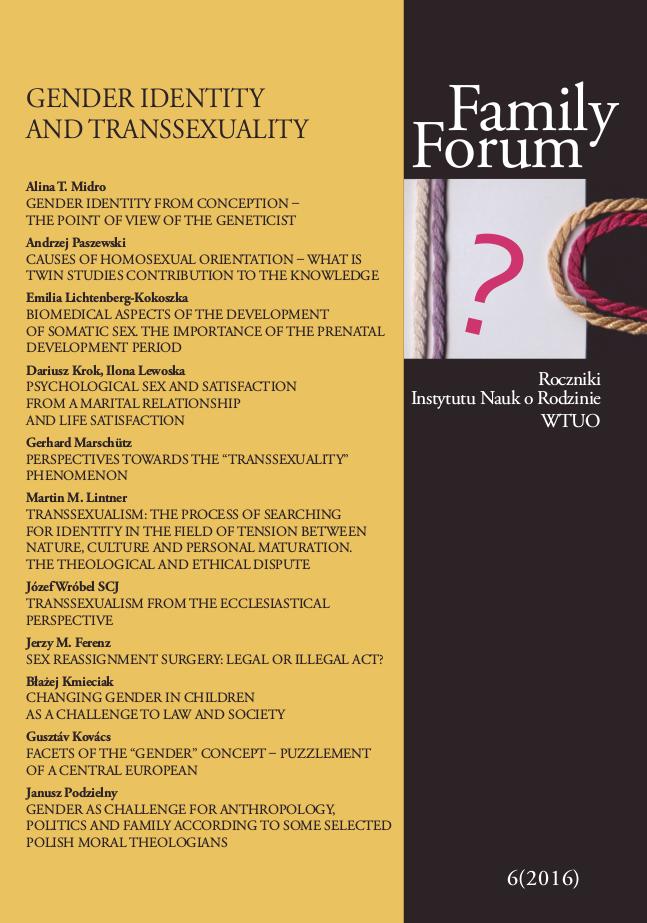Przyczyny orientacji homoseksualnej – co wnoszą do wiedzy badania nad bliźniakami
Causes of homosexual orientation – what is twin studies contribution to the knowledge
Author(s): Andrzej PaszewskiSubject(s): Christian Theology and Religion, Theology and Religion, Family and social welfare
Published by: Uniwersytet Opolski
Keywords: homosexuality in twins; genetic and environmental factors;
Summary/Abstract: Same-sex attraction (SSA) encompasses a few per cent of population. Its origin is a subject of prolonged debate over the question whether it is determined by biological factors such as genes or by environmental factors. A prevailing popular conviction is that SSA is an inborn and unalterable condition – „one is born this way”. This takes place in spite of a vast amount of scientific data, particularly from twin studies, which clearly show that genetic contribution in the development of SSA is low, accounting only for 11–14%. This may involve changes in gene nucleotide sequences or epigenetic alterations of gene expression. Both possibilities get some experimental support, which suggests that genes are necessary but far insufficient for the development of SSA. The most important players involved appear to be prenatal and particularly postnatal random environmental factors. The later are numerous and diverse and usually unshared by the twins. Thus SSA results mostly from unique reactions to such factors so each case of homosexual orientation has its own individual history. Since SAA development starts early (ten being the mean age of first attraction), its deliberate choice by an individual must be a very unusual event. Sexual orientation often changes in lifetime, predominantly from homosexual to heterosexual particularly among adolescents.
Journal: Family Forum
- Issue Year: 2016
- Issue No: 6
- Page Range: 31-43
- Page Count: 13
- Language: Polish

